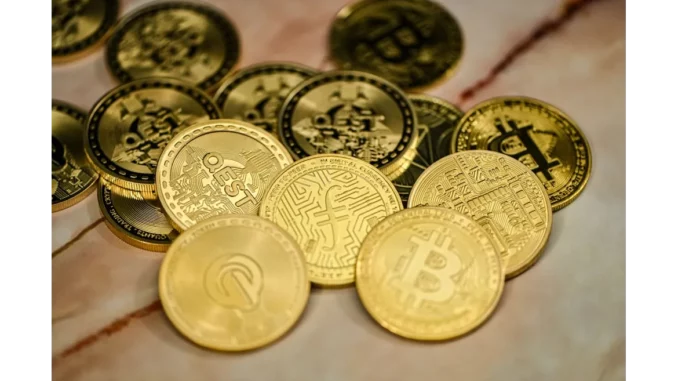
Summary
Filecoin: Pioneering Decentralised Data Storage in a Digital Era
Filecoin, a decentralised storage network, is gaining traction as a transformative force in the digital storage landscape. Utilising blockchain technology, Filecoin presents a secure and efficient alternative to traditional cloud storage, offering competitive pricing and an innovative economic model. As the demand for data storage escalates, Filecoin’s decentralised architecture promises enhanced security and scalability. Despite facing adoption challenges, recent developments and integrations with other blockchain networks position Filecoin as a significant player in the Web3 ecosystem, with potential implications for decentralised finance (DeFi).
Main Article
Understanding Filecoin’s Framework
Filecoin operates on a decentralised network that leverages the InterPlanetary File System (IPFS) to distribute data across a global array of independent storage providers. By utilising a novel consensus mechanism, Proof-of-Spacetime, Filecoin incentivises miners to offer storage space while maintaining data integrity. “Filecoin is essentially a decentralised marketplace for storage,” explains blockchain analyst Michael Carter. “Users pay to store data, while miners earn FIL tokens for providing the necessary storage, creating a mutually beneficial ecosystem.”
Economic Incentives and Market Dynamics
Filecoin’s economic model is designed to foster a competitive market for data storage. Users pay with FIL tokens to store data on the network, while storage and retrieval miners earn FIL for their services. This dynamic pricing model adjusts according to supply and demand, encouraging participation and enabling miners to recover hardware costs. This competitive environment enhances network efficiency and offers a cost-effective solution for users.
Cost Efficiency and Technological Edge
Filecoin’s pricing model is notably competitive, with current storage costs on the network estimated at $18.976 USD per GB annually. This translates to roughly 1 FIL for 4.335 GB per year. Sarah Johnson, a data storage expert, remarks, “Filecoin’s approach is not just about lowering costs; it’s about fostering a transparent and decentralised marketplace for data storage.” The network’s decentralised architecture significantly mitigates risks associated with single points of failure, enhancing both data security and privacy.
Challenges in Adoption and Market Position
Despite its promising technology, Filecoin faces several hurdles. The complexity of onboarding new users and miners, bandwidth limitations in data retrieval, and the concentration of storage among large miners present challenges. However, these obstacles are not insurmountable and require concerted development and community efforts to overcome. As the decentralised storage market matures, Filecoin’s ability to address these challenges will be crucial to its long-term success.
Detailed Analysis
Broader Economic and Technological Implications
The rise of Filecoin and similar decentralised storage solutions is indicative of a broader shift towards decentralisation in the digital economy. As traditional cloud storage providers face increasing scrutiny over data security and user privacy, decentralised networks like Filecoin offer a compelling alternative. This shift aligns with the growing demand for more secure, user-centric data storage solutions in the digital age.
Filecoin’s integration with other blockchain networks and its expanding ecosystem of decentralised applications (dApps) further highlight its potential impact on the DeFi landscape. By providing a decentralised storage infrastructure, Filecoin enables the development of truly decentralised applications that operate independently of centralised servers, enhancing the scalability and robustness of financial applications within the DeFi ecosystem.
Technological Innovations and Network Expansion
Recent software optimisations have reduced costs for network participants, facilitating easier entry for Filecoin Storage Providers and data onboarding. These developments have led to an overall cost reduction of up to 40% for decentralised storage, bolstering Filecoin’s competitiveness in the market. Moreover, Filecoin’s growing ecosystem of dApps and its integration with other blockchain technologies are expanding its utility beyond mere data storage, potentially driving increased demand for FIL tokens.
Further Development
Anticipated Developments and Market Projections
Looking ahead, Filecoin’s future price trajectory remains uncertain, influenced by a range of factors including technological advancements and growing adoption. Market analyst Mark Thompson predicts, “With continued innovation and increased integration, FIL could potentially reach $25 by the end of 2024, with further growth to $50 by 2025.” While long-term forecasts suggest even higher valuations, the volatile nature of the cryptocurrency market necessitates caution.
Furthermore, Filecoin’s focus on decentralised storage aligns with the broader Web3 movement, which seeks to create a more decentralised and user-centric internet. As Filecoin continues to evolve, its role in the Web3 ecosystem and its integration with other blockchain technologies will be pivotal in shaping its future trajectory.
Invitation for Continued Engagement
As Filecoin navigates its path forward, staying informed on developments and market trends remains essential for stakeholders. With its innovative approach to data storage and potential implications for decentralised finance, Filecoin represents a key area of interest in the evolving landscape of blockchain technology. Readers are encouraged to follow ongoing coverage as the story continues to unfold, offering insights into Filecoin’s progress and its impact on the broader digital economy.

